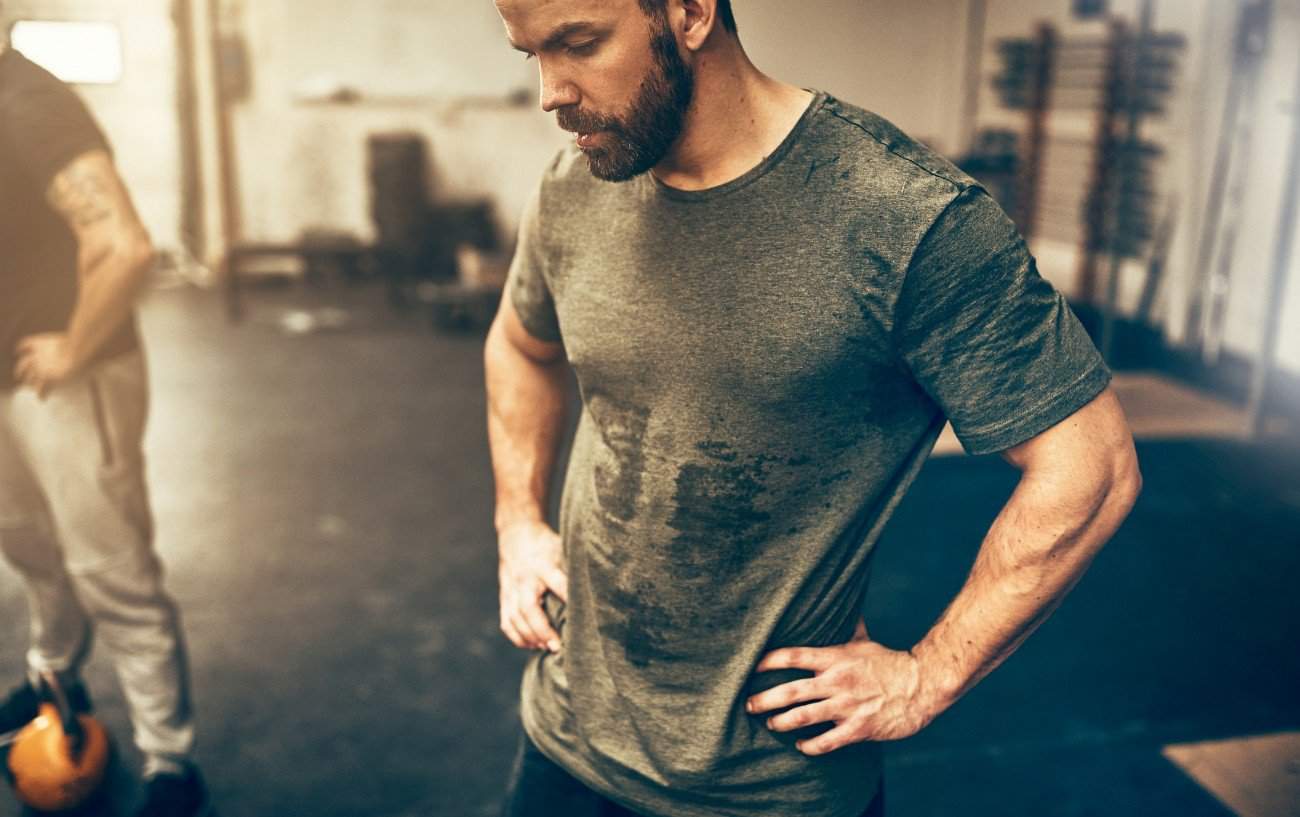Our bodies are pretty incredible; they allow us to run, jump, and lift weights.
What’s more, our bodies are responsive. Through consistent workouts, we can train our bodies to be able to run faster, jump higher, and lift heavier weights.
The physiological adaptations to the stressors of training can be described by a principle in fitness methodology and training known as supercompensation.
What is supercompensation? How does supercompensation impact your fitness training and performance? How can you structure your workouts to increase supercompensation?
Keep reading to find out!
In this guide, we will cover:
- What Is Supercompensation?
- Supercompensation and Periodization of Training
- How Does Supercompensation Work?
- Supercompensation Training Guide
Let’s dive in!

What Is Supercompensation?
Supercompensation, which is also sometimes referred to as overcompensation, can be considered as both an outcome of fitness training as well as a conceptualized model through which you structure your training plan.
Essentially, supercompensation refers to the physiological adaptations that your body makes in response to the stresses you put on it during your workouts.
When you’ve trained correctly or done supercompensation training, these physiological adaptations—such as increases in muscle size and strength, improvements in aerobic capacity and endurance, and gains in power and speed—actually exceed what would be expected from the level of stimulus your body experienced from training.
Supercompensation and Periodization of Training
The concept of supercompensation training originally emerged in conjunction with the beginnings of our understanding of periodization in training.
Supercompensation was said to be the result of the second of the three phases of Selye’s General Adaptation Syndrome (GAS) model, known as the resistance phase.
GAS was said to be the result of physiological systems adapting due to the stressors placed upon them as a result of dealing with those stressors.
In other words, by doing hard workouts, the body is challenged in a way that forces fitness adaptations.

In the original GAS model, Selye defined three specific phases through which he said these adaptations take place.
- Alarm/Reaction Phase: In the initial alarm/reaction phase, the athlete may experience stiffness, soreness, or a small decrease in performance due to fatigue that occurs because of the training session.
- Resistance Phase: In the second phase, the body responds to the stressor of training by adapting, leading to less soreness and stiffness, greater tolerance to the workout, and improved performance.
- Exhaustion Phase: This phase occurs if and when the stressor of training goes on longer or is too significant for the body to adapt, resulting in staleness and overtraining.
Supercompensation comes into play with the second phase. It was observed that actually the body experiences adaptations that exceed the level demanded by the stressor it’s being subjected to through the training, a phenomenon dubbed “supercompensation.”
To make a very simplistic example, imagine that you’re consistently lifting weights 3-4 days per week.
Initially, you could only squat 100 pounds. You’d get pretty sore and tired after your workouts, and if you tried to squat two days in a row, you couldn’t do as many reps on the second day because you were still sore and tired.
This is the alarm/reaction phase.
However, over time, with consistent training, your squats started to feel easier because you’ve gotten stronger, and your muscles have adapted and grown through the process of myofibrillar protein synthesis (MPS).
Now, you go to increase the weight on your squat and see that you can actually squat 130 pounds fairly easily, even though you haven’t been lifting more than 100 pounds in your workouts.
This is supercompensation—your muscles have adapted to a greater extent (ability to squat 130 pounds) than the stressors placed upon them (100 pounds) demanded.

How Does Supercompensation Work?
From its inception, the model through which supercompensation in training is thought to occur had evolved to include the following phases:
Phase 1: Training (Depletion)
During the first phase, athletes begin a structured training plan that introduces a stressor or stimulus that’s greater than what the body is already accustomed to. Due to this stress, the body experiences fatigue, so performance may temporarily decline.
This phase is also called the depletion phase because the level of physical preparedness to exercise declines or gets depleted during the phase because you’re essentially overdoing it.
The entire purpose of training is to use progressive overload to make the body adapt and get stronger, so this is a normal anticipated response to an appropriate training program.
With that said, because you’re working out harder or stressing your body more than it can currently withstand (in order to induce an adaptive response and gains in fitness), your body slowly starts to break down and get depleted.

Phase 2: Recovery (Resolution)
Because performance declines, the athlete is promoted to take some type of recovery, be it an active recovery workout like low-intensity cross training, active rest like foam rolling or contrast baths, or passive recovery (complete rest).
As long as the athlete takes a proper recovery and takes in adequate nutrition, the body fully rebounds so that the energy stores and performance return to their original baseline levels of strength and fitness.
While the first phase was depletion, this phase is the resolution.
If you picture a line graph of your body’s physical state of readiness, the training phase would be represented by a negative dip in the graph.
The recovery phase, or resolution, would be a return back up to baseline.

Phase 3: Supercompensation
Supercompensation can be thought of as the insurance policy your body develops after hard lessons were learned.
Basically, during the recovery period after the initial overly-fatiguing training program was introduced, the body is keen on preventing getting caught in the same situation of being underprepared for training stressors.
Your body doesn’t want to get stuck in the situation again where you’re trying to lift more than it can handle, run faster than is comfortable, or do more sets than your muscles can endure without getting really stiff, sore, and tired.
The body doesn’t want to be unprepared and potentially broken down again such that tissues are damaged, performance declines, and you’re in a state of reduced function.
Accordingly, the body responds during the recovery phase by predicting a similar but even greater stressor to come.
Because your body wasn’t really strong enough to withstand the previous training stimulus without consequential fatigue and damage, it over-exaggerates or over-anticipates the adaptations it needs to make in case the next training stimulus or stressor is even higher (which it will be if you’re doing progressive overload in your training).
If you do supercompensation training correctly, you essentially trick your body into giving you even better gains or boosts in your fitness relative to the training you’ve been doing.
In the line graph of your body’s physical state, the recovery phase had taken us back up to baseline, and the supercompensation phase would be an even higher bump up, climbing past your starting level.

Phase 4: Decline of Fitness
Once you return to your training program, you reintroduce a higher stress through progressive overload.
This stimulus again overwhelms what the body can handle, so you again experience stiffness, soreness, and a decline in performance.
As such, the graph dips again.
Image from Science and Practice of Strength Training, 2006.
However, as long as you’re on top of your recovery and don’t overdo it excessively with your new round of training, the dip or decline will be minimal, and you can rebound during the recovery phase soon.
The primary goal of using the supercompensation principle to guide your training is that you embrace the fact that a sinusoidal wave will occur with training—dips with depletions, rises with rebounds, and bonus bumps up with supercompensation—but that the wave with trend upward relative to the x-axis.
This means that your supercompensation training graph should have a positive slope, with each subsequent wave ending slightly higher than it began.

Supercompensation Training Guide
The key to maximizing supercompensation is to incorporate microcycles, mesocycles, and macrocycles into your training and to use progressive overload.
Progressive overload is the principle of gradually increasing the difficulty of your workouts, ensuring your muscles stay constantly challenged so that they don’t become accustomed to your workouts.
By implementing progressive overload in your routine, you can prevent fitness plateaus because the muscles have to keep adapting as the workouts get harder and harder.
From a practical perspective, progressive overload is primarily achieved by increasing your training volume.
With strength training, this may be accomplished by increasing the weight you lift per exercise, the number of reps and sets you perform, or the number of exercises per muscle group you do per workout.
Miicrocycles, mesocycles, and macrocycles involve having build phases and recovery phases in your training.
Recovery needs to be built into each workout and each week on the micro-scale. You should also have relative down weeks on the mesocycle level and relative off seasons or an easy month or so per year on the macrocycle scale.
This will help ensure you’re giving your body the stimulus and then the pause to rebound so that supercompensation occurs.
Looking to get started on some training yourself? We have a 4-day workout routine to build strength just for you!













